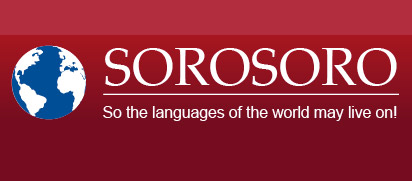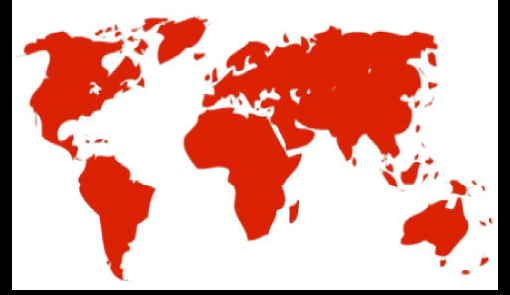Print  |
|

Gurindji
Original data collected by AUTSLANG
Data on the language
Alternatives names: Gurinji, Korindji, Garundji
For additional names and alternative spellings, see the AUSTLANG website.
Classification: Pama-Nyungan family, Ngumpin-Yapa group, Ngumpin subgroup
Main dialects: McConvell (2006 p.c.) distinguishes two dialects of Gurindji:
– Eastern Gurindji
– Malngin
According to McConvell, Wanyjirra and Kartangarurru could also be treated as dialects of Gurindji.
Area: Gurindji is an aboriginal language spoken in the Australian Northern Territory (NT). It starts to the south of this (Jiyiljurrung of Wattie Creek or ‘Seale River’ area), although Jiyiljurrung descendants now speak Gurindji and are considered Gurindji (McConvell in Sutton 1995:109).
Number of speakers:
The Australian Bureau of Statistics 2006 Census estimated 592 speakers of Gurindji. According to Lee & Dickson (2002), only 175 actually speak and understand Gurindji.
Language vitality & transmission:
According to AUSTLANG, Gurindji is “no longer fully spoken” (endangerment grade 0). Gurindji Kriol is the language transmitted to the new generation at present.
Media/Literature/Instruction:
Patrick McConvell is writing a grammar and dictionary.
Felicity Meakins is doing research on Gurindji Kriol. Both of them also conduct research on language acquisition of Gurindji speaking children.
Linguistic observations
Gurindji is a suffixing language. Phonologically, it is a fairly typical Pama-Nyungan language. It contains stops and nasals which have:
– five corresponding places of articulation (bilabial, apico-alveolar, retroflex, palatal and velar),
– three laterals (apico-alveolar, retroflex, palatal),
– two rhotics (trill/flap and retroflex continuant),
– two semivowels (bilabial and palatal),
– three vowels (a, i, u).
Combinations of semivowels and vowels produce diphthong-like sounds. Like most Pama-Nyungan languages, Gurindji contains no fricatives or voicing contrast between stops. Stress is word initial, and syllables pattern CV, CVC or CVCC.
Gurindji is a dependent marking language. Word order is relatively free, though constrained by discourse functions. The verb phrase is made up of a free coverb and an inflecting verb, which contains information on tense, mood, and modality. Bound pronouns also attach to the inflecting verb to cross reference subjects and objects for person and number. These pronouns inflect for nominative and accusative case, unlike free pronouns whose form only changes for dative case.
The noun phrase may contain nouns, adjectives, demonstratives and free pronouns. Case marking for nouns is ergatively patterned, and generally other elements in the noun phrase must agree with noun’s case.
Sources & bibliography
Felicity Meakins. 2008. Land, language and identity: The socio-political origins of Gurindji Kriol [pdf]. In M. Meyerhoff and N. Nagy. Social Lives in Language. Amsterdam: John Benjamins. pp. 69-94
Felicity Meakins. 2008. Unraveling languages: Multilingualism and language contact in Kalkaringi [pdf]. In J. Simpson & G. Wigglesworth (Eds.), Children’s language and multilingualism: Indigenous language use at home and school. New York: Continuum. pp. 247-64.
Felicity Meakins. 2005. with C. O’Shannessy. “Possessing Variation: Inalienability and age-related factors in the possessive constructions of two Australian mixed languages.” Monash University Linguistics Papers. 4.2: 43-63.
Lee, Jason and Greg Dickson. (2002). State of indigenous languages of the Katherine region. Katherine: Diwurruwurru-jaru Aboriginal Corporation.
Meakins Felicity. 2005. with McConvell, Patrick. Gurindji Kriol: A Mixed Language Emerges from Code- Switching [pdf]. Australian Journal of Linguistics. 25.1: 9-30
McConvell, Patrick, Gurindji dictionary, ASEDA 0564.
McConvell, P. (1980). Hierarchical variation in pronominal clitic attachment in the Eastern Ngumbin languages. Papers in Australian Linguistics No.13: Contributions to Australian linguistics. B. Rigsby and P. Sutton. Canberra, Pacific Linguistics: 31-117.
McConvell, P. (1985). “The Origins of Subsections in Northern Australia.” Oceania 56: 1-33.
McConvell, P. (1985). Domains and codeswitching among bilingual Aborigines. Australia, meeting place of languages. M. Clyne. Canberra, Pacific Linguistics. Series C – No. 92: 95-125.
McConvell, P. (1988). Mix-im-up: Aboriginal code-switching, old and new. Codeswitching: anthropological and sociolinguistic perspectives. M. Heller. Berlin, Mouton de Gruyter: 97-150.
McConvell, P. (1988). Nasal Cluster Dissimilation and constraints on phonological variables in Gurindji and related languages. Aboriginal Linguistics 1. N. Evans and S. Johnson. Armidale, Department of Linguistics, University of New England. 1: 135-187.
McConvell, P. (1990). Ergativity and the scope of ‘again’ in English and Gurindji. Copenhagen, Functional Grammar Conference.
McConvell, P. (2001). “Mix-im-up speech and emergent mixed languages in Indigenous Australia.” Texas Linguistic Forum [Proceeedings from the Ninth Annual Symposium about Language and Society – Austin April 20-22, 2001] 44: 328-349.
McConvell, P. (2002). Linguistic stratigraphy and native title: the case of ethnonyms. Language in native title [Native Title Research Series]. J. Henderson and D. Nash. Canberra, Aboriginal Studies Press: 259-290.
McConvell, P. (2002). Changing places: European and Aboriginal styles. The land is a map: Placenames of indigenous origin in Australia. L. Hercus, F. Hodges and J. Simpson. Canberra, Pacific Linguistics and Pandanus Press: 50-61.
McConvell, P. (to appear). Gurindji. The handbook of Australian languages. R. M. W. Dixon and B. J. Blake. Oxford, Oxford University Press.
Maps
McConvell, Patrick. 1980. Hierarchical variation in pronominal clitic attachment in the eastern Ngumbin languages. In Contributions to Australian linguistics. eds. B Rigsby and P Sutton, 31-117. Canberra: Pacific Linguistics.
Nordlinger, Rachel. 1998. A grammar of Wambaya, Northern Territory (Australia). Canberra: Pacific Linguistics.
Links
University of Melbourne (Australia) website: http://www.linguistics.unimelb.edu.au/research/projects/ACLA/gurindji.html
Katherine Regional Aboriginal Language Centre website: http://www.kathlangcentre.org.au/
AUSTLANG website: http://austlang.aiatsis.gov.au/main.php
Ethnologue webpage: http://www.ethnologue.com/show_language.asp?code=gue
Please do not hesitate to contact us should you have more information on this language: contact@sorosoro.org








